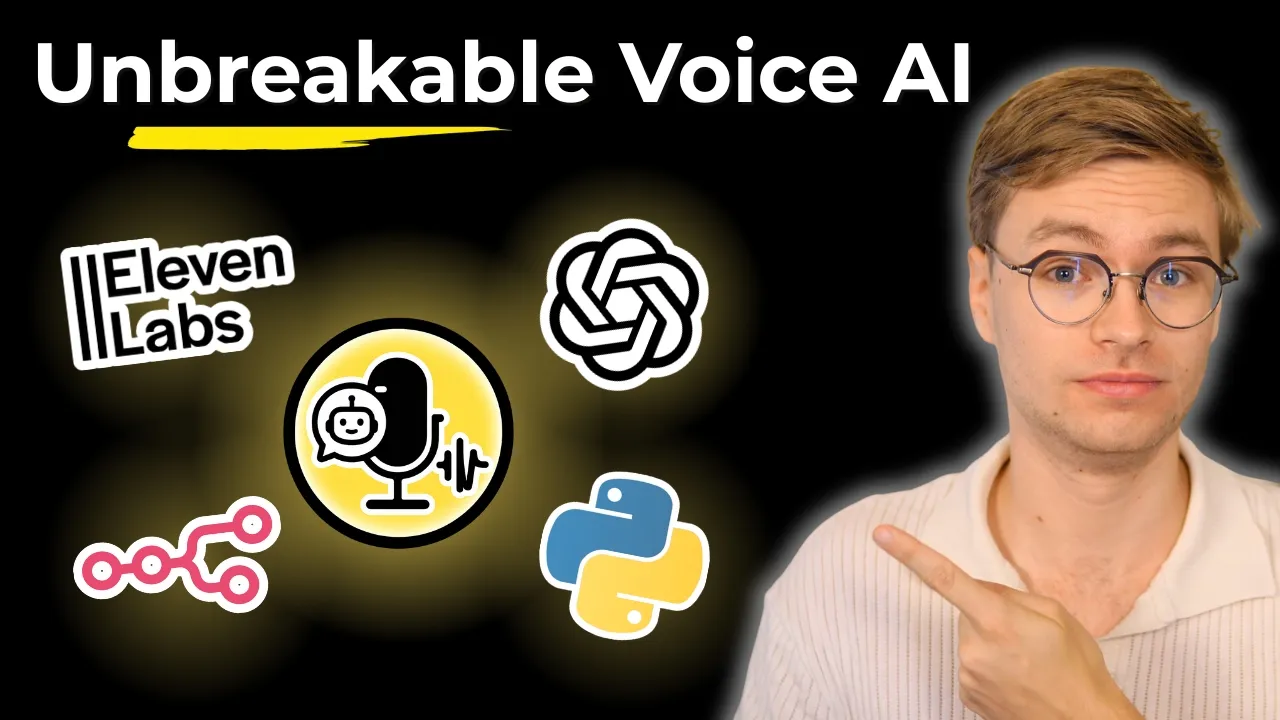Custom AI Voice Agent for Customer Support
Every support leader wants an AI voice agent that can absorb routine call volume without damaging the customer relationship. The reality is harsher. Most agents drift the minute a caller goes off script. In the video, I showed how that failure plays out: a customer survey bot kept demanding a happy anecdote while the caller begged for help. The fix is not a longer prompt. It is a moderator loop that watches the entire conversation, reinforces the mission, and guides the agent back to the checklist your team actually cares about.
Why Support Voice Agents Break in Production
Traditional voice bots rely on a single prompt and a hope that the model remembers every instruction. That works in short demos, but live callers bring frustration, tangents, and sarcasm. Once the call stretches, the model prioritizes the most recent exchange and forgets the structured goal. The result is a support experience that loops, contradicts itself, or misses required data. Customers hang up, your metrics tank, and the team spends hours cleaning up.
The moderator pattern stops that slide. By running a second AI process that reads the full transcript and checks progress against a shared checklist, you give the voice agent a constant source of coaching. It remembers why the call exists, which policies matter, and how to respond with empathy even when the caller is heated.
How the Moderator Keeps Support Conversations Productive
In the demo, the moderator produced three outputs after every turn:
- A completion checklist that highlighted the CSAT items still missing
- Coaching instructions that told the agent how to acknowledge frustration before moving on
- A suggested follow-up prompt that aligned with the service goal
Because the moderator shares the same system prompt as the agent, it never loses sight of the mission. When the caller complained about downtime, the moderator steered the agent toward clarifying questions instead of recycling the original script. That is the difference between a bot that feels robotic and one that sounds genuinely helpful.
If you are mapping similar flows, pair this approach with the frameworks in AI Agent Development Practical Guide for Engineers. You will understand how to treat the moderator like a teammate rather than a bolt-on fix.
Designing the Support Checklist
Support operations live on structured data: case reasons, severity levels, product identifiers, and promised follow-ups. The moderator needs a checklist that reflects those realities. In the video, the checklist defined every survey item the business wanted captured. In your environment, it might include:
- Confirming account identity with approved phrasing
- Recording the primary issue category and secondary symptoms
- Capturing the requested resolution or next step
- Offering escalation paths when the customer expresses dissatisfaction
By documenting these elements in the shared prompt, you guarantee the moderator knows exactly what completeness looks like. For guidance on maintaining those prompts, review AI Agent Documentation Maintenance Strategy. Operations teams can then refresh the checklist without rewriting code.
Empathy at Scale Still Drives Results
Support leaders worry that automation erodes empathy. The moderator loop helps the agent adjust tone on every turn. It can suggest phrases that acknowledge frustration, reassure the caller about time commitments, and segue into policy explanations without sounding dismissive. In the video, that guidance prevented the customer from hanging up. At scale, that means higher CSAT, lower churn, and better agent morale.
Build a simple review ritual to monitor these calls. Product managers and quality teams can scan moderator transcripts to confirm tone and identify new coaching opportunities. Tie those findings back to the playbooks you already use for human agents so the experience stays consistent across channels.
Launching Without Derailing Support Ops
Before you deploy, run moderated agents in parallel with your existing support workflows. Measure completion rates, handle times, and escalation handoffs. When the data shows parity, begin routing specific call types to the AI. This staged rollout reflects the change management strategies in AI Agent Tool Integration Guide. Your team stays confident because every step is documented and reversible.
Next Steps
Watch the video walkthrough to see the moderator in action and study how it packages checklist, coaching, and suggested prompts. Then bring the pattern into your own support environment. Inside the AI Native Engineering Community we are sharing moderated call templates, review scorecards, and rollout plans that shortcut months of trial and error. Join us to build a customer support voice agent that handles volume without sacrificing the human touch.

